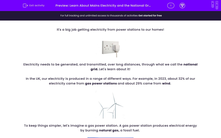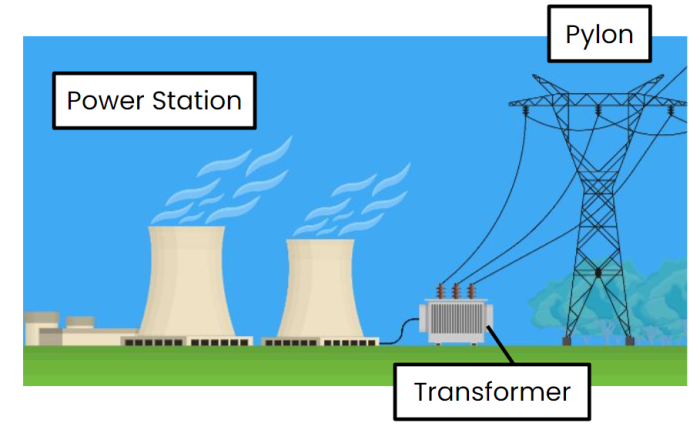It's a big job getting electricity from power stations to our homes!
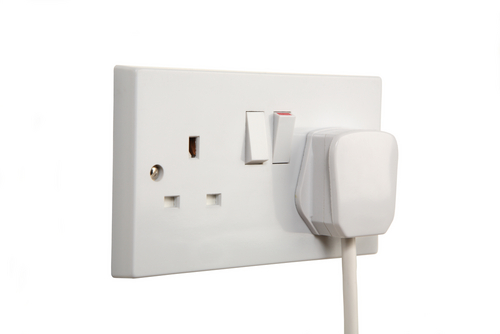
Electricity needs to be generated, and transmitted, over long distances, through what we call the national grid. Let's learn about it!
In the UK, our electricity is produced in a range of different ways. For example, in 2023, about 32% of our electricity came from gas power stations and about 29% came from wind.
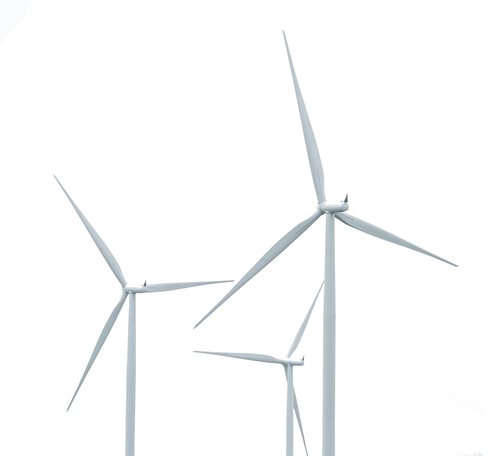
To keep things simpler, let's imagine a gas power station. A gas power station produces electrical energy by burning natural gas, a fossil fuel.

Electricity reaches homes through a network we call the national grid. The national grid includes everything between the power station and the final energy consumer, for example, transmission cables and pylons.
When electricity leaves the gas power station, it passes through a device called a step-up transformer. The step-up transformer increases the potential difference of the electricity, up to values around 275,000 Volts!
Increasing the potential difference allows electricity to be transmitted more efficiently through the power lines. Those power lines are held by pylons.
.jpg)
When the electricity reaches an area with homes or factories that need the electricity, it is then passed through a step-down transformer. The step-down transformer reduces the potential difference to a value that can be used.
For homes, the new potential difference (or voltage) is 230 V.
We call the electricity that reaches our homes like this mains electricity. In the UK, we access this electricity using sockets and plugs like this.

This is what the interior of a plug looks like (never try opening a plug on your own!)
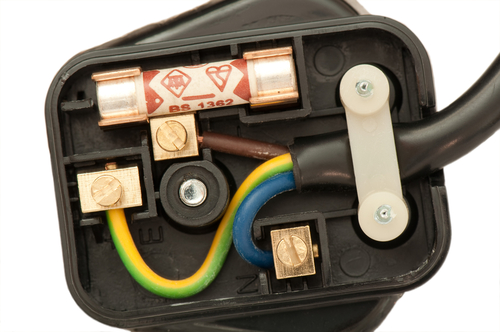
There are three wires inside most plugs in this country.
| Live wire | Brown |
| Neutral wire | Blue |
| Earth wire | Yellow and green striped |
The live wire and the neutral wire are what form the complete circuit allowing the electricity to reach the appliance being plugged in.
The earth wire is a safety feature, which is connected to the ground. It can prevent electrical shocks or electrical fires.
Now let's check our understanding with some questions!
Are you ready?

